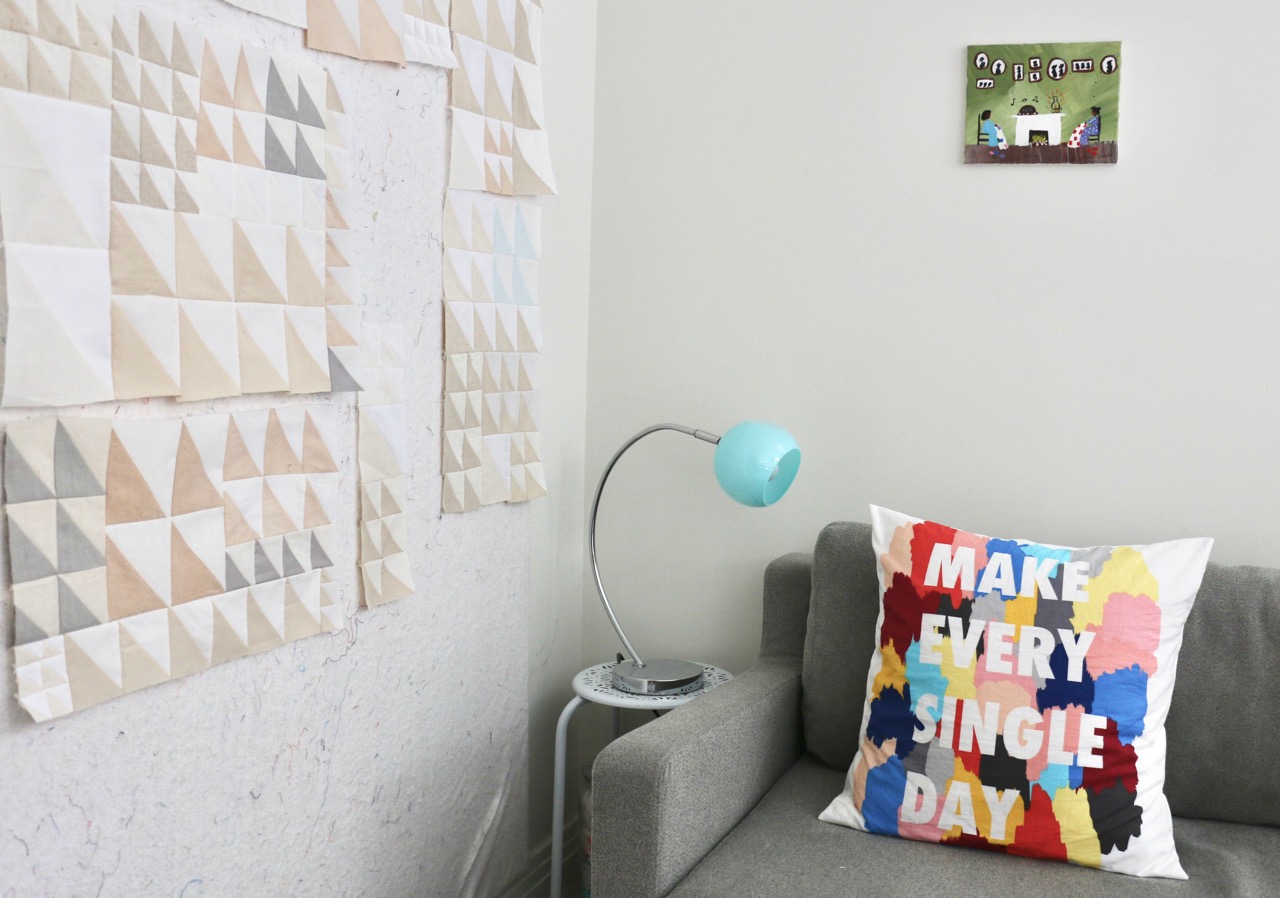Sometimes I feel like an impulsive child. The one who just barreled ahead, without thinking, infuriating their parents as they went. “What did you think would happen?” I am totally that parent. And I am totally that child.
I had an idea and just wanted to see what it would look like. I grabbed some scraps to play. Of course it would turn into a quilt! And here I was trying not to start any new quilts.
What did you think would happen?
Well, I didn’t think. I was just playing. And now it seems I’ve started a new quilt.
This represents 10 days of Morning Make sessions, plus maybe one or two stints in the evening. Just 20-30 minutes a day. For now I am calling these doodles. Lines on fabric. Pieced, not applique. I started in the scrap bin then pulled out from my actual solid stash. Initially I only went with orange, but after sharing the blocks on social media a few people mentioned that it looked like line drawings on the human forms, just in detail. That got me thinking so I started adding the browns. And I have a stack of pinks that will likely join in.
Other people said it looked like deconstructed basketballs, which I also see, but it less inspiring..
Like that impulsive child, I have no idea where it is going. Obviously it will be a quilt - I should have expected that - but what it will be is very much up in the air. Will I add sashing? Will I lay it out in a colour gradiant or by shape? How many blocks will I actually make? For now, I am just going to keep playing.
Setting myself up to sew right in front of the design wall feeds the creativity. Usually I am in this spot when I am machine quilting - so that the weight of the quilts does not pull off the table. I had moved the table here for just that, actually. Then I discovered I needed a new spool of thread. The delay meant the time to play. And now I am like “what quilt needs to be quilted?”
And oh, yes, there is a second, concurrent sewing project going on there. More on that next week.

















